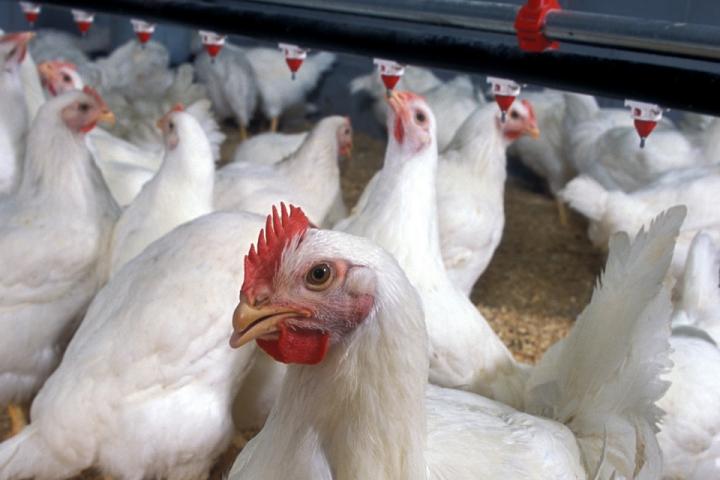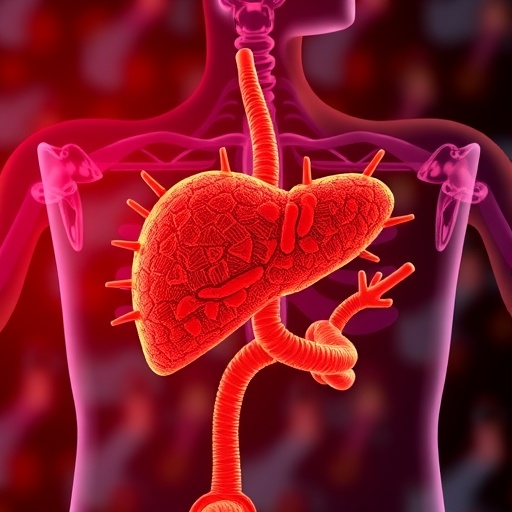New research to enhance chicken-raising practices

Credit: Photo courtesy the USDA ARS, image k10003-7 by S. Ausmus.
KNOXVILLE, Tenn. — Smile, chickens. You’re soon to be on candid camera.
Hao Gan, a biosystems engineer with the University of Tennessee Institute of Agriculture, is working to develop a system of multi-angle and multi-range cameras to monitor commercial broilers at both the individual and flock levels to help producers monitor the chickens’ level of activity. Using vision software and training, farmers should be able to generate a specific and meaningful animal-based measurement that allows them to enhance raising practices.
The metric should also serve as a common assessment tool for food retailers and consumers seeking to support practices that enhance animal welfare.
Gan is among six recipients of a Phase I grant from the Foundation for Food & Agriculture Research (FFAR) SMART Broiler Initiative, which in partnership with McDonald’s, is awarding more than $4 million in grants and technical support to develop automated monitoring tools that precisely assess broiler chicken welfare. The idea is to enhance the welfare of the approximately 9 billion birds raised annually in the U.S. Increased efficiency for producers is also a goal. Current methods for assessing broiler chicken welfare on farm rely on human observation and subjective scoring.
“Our design approach is to incorporate vision
software training with input from professional welfare assessors to produce an
assessment system that solves the expense and labor shortages associated with current
manual welfare assessments,” says Gan. “But the system also needs to maintain
the accuracy and integrity of manual assessments.” The continuous operation of
the automated system would reduce the number of hours of manual labor
associated with welfare assessment while increasing the monitoring of bird
health and activity.
The researcher further notes that improved farmer efficiency must go hand-in-hand with enhanced animal welfare. “Consumers worldwide are justifiably concerned with food animal welfare and seek to make purchasing decisions that result in improved raising practices. A challenge in addressing this concern is the need to develop tools that quantify food animal behavior, the ultimate welfare indicator,” Gan says.
Gan, and his research partners from Mississippi State University, the USDA Agricultural Research Service and BioRICS NV, intend for the system output to be a flock benchmark score for use by the farmer, food retailer, and ultimately the consumer. For the first time the poultry industry and consumers may have a tool that works to improve raising practices and that provides an animal-based metric to help purchasing decisions.
The
SMART Broiler Initiative is
divided into two phases. Phase I provides funds for early development and
testing of technologies and Phase
II will refine and validate the most promising technologies from Phase I. Gan’s
research team received a Phase I award of $350,000, with additional contributions provided by UT
AgResearch and Peco Foods, for a total of more than $513,000.
Five other projects were also funded as part of
the SMART
Broiler Initiative. FFAR anticipates the announcement of Phase II
awards in late 2021.
Foundation for Food and Agriculture Research
The Foundation for Food and Agriculture Research (FFAR), a 501(c)(3) nonprofit organization originally established by bipartisan Congressional support in the 2014 Farm Bill, builds unique partnerships to support innovative and actionable science addressing today’s food and agriculture challenges. FFAR leverages public and private resources to increase the scientific and technological research, innovation, and partnerships critical to enhancing sustainable production of nutritious food for a growing global population. The FFAR Board of Directors is chaired by Mississippi State University President Mark Keenum, Ph.D., and includes ex officio representation from the U.S. Department of Agriculture and National Science Foundation. Connect: @FoundationFAR | @RockTalking
The University of Tennessee Institute of Agriculture
Through its land-grant mission of research, teaching and extension, the University of Tennessee Institute of Agriculture touches lives and provides Real. Life. Solutions. utia.tennessee.edu.
Media Contact
Patricia McDaniels
[email protected]
Original Source
https:/




